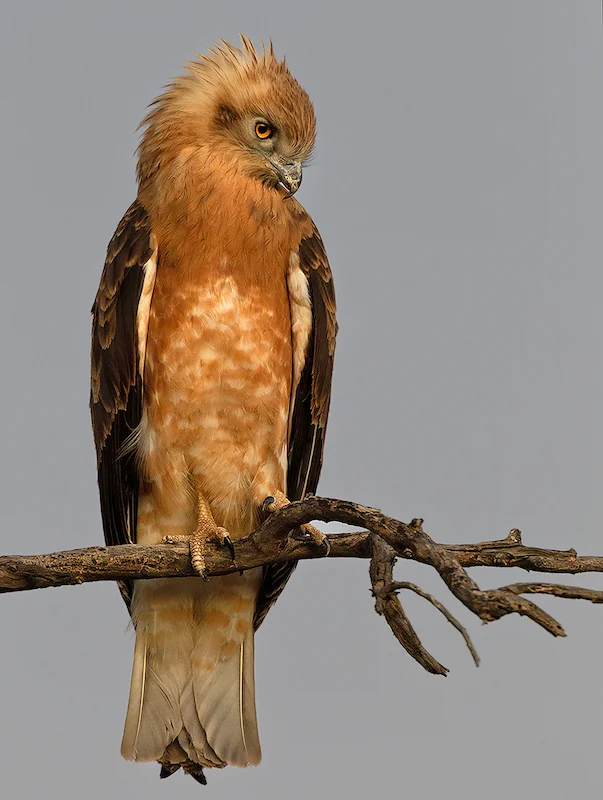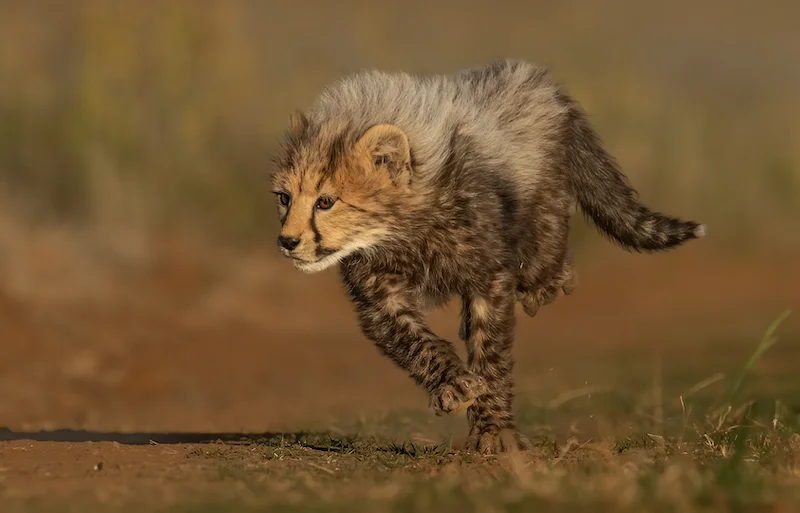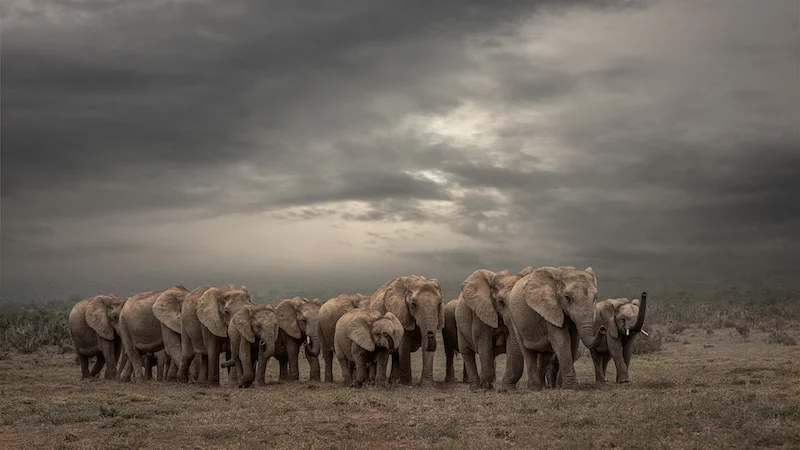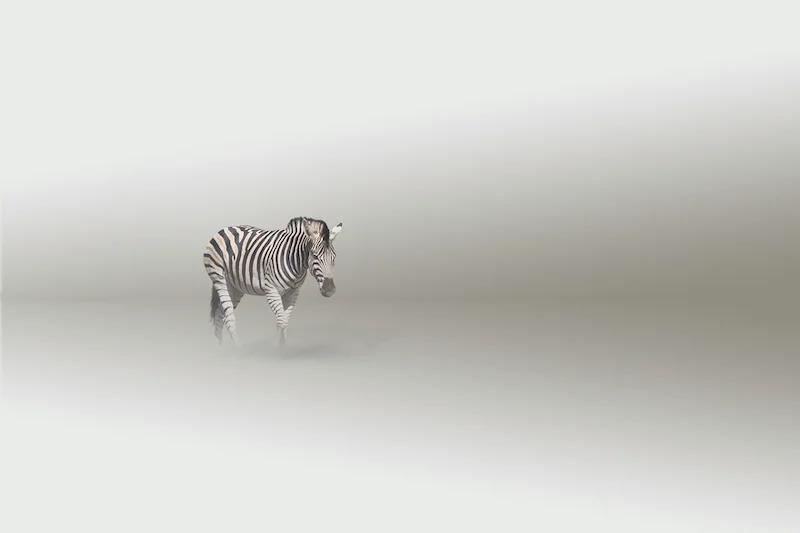In the face of AI and ever improving smartphone cameras, does traditional photography have a future in South Africa? With the advanced capability of post processing software, one might argue that the photographer does not need to be highly skilled in the craft, so we are a dying breed. I prefer to disagree, but we do need to evolve to catch up with the times if our clubs are to survive.
Fig.1-2: One of these images was a PSSA* monthly competition winner in 2023. The other I generated in Canva AI in 10 seconds. There certainly are quality differences, but contemporary society would scroll past either when considering what constitutes a 'good photograph.' I think photographs that move the emotions or have more artistic qualities are the future of our art. (Photo Credit: Shirley Gillet; https://pssa.co.za/website-competition-winners-july-2023/ & Canva).
*Photographic Society of South Africa
For years we have strived to achieve otherworldly images and strong background separation with expensive lenses to bokeh the distractions out of the scene. In 2024 we are on the verge of all those fancy lenses and skills becoming irrelevant in some categories.
The only people left who really care about those things are photographers, much like guitarists who can 'hear' the tones of different woods and old school tube amps. I am a lover of the latter, but after years of playing, recording and producing music, have learned that it’s largely just marketing and indulgence for the most part. If one does the cost-benefit analysis, we reach a point of grossly diminishing returns at around the mid-range price point of most gear. Let's be real, our average consumers are none the wiser. Where the difference came in the past is that someone without the skill, experience and gear could not achieve images (or music) close to those we hold in high esteem, but with todays access to information, level of tech, influence of social media and powerful post processing, almost anyone can be a 'good' photographer or musician.
To avert from this I have my 4-year old daughter learning to shoot on a used Fuji XT-1 on full manual with a manual focus TT Artisan chunk of glass, and her images whilst not competition ready, are decent! I’m not teaching her the things that cameras and software can do (ie. autofocus, shoot at 120 fps, edit to death in PS), I’m teaching her how to SEE the world around her, see the world as a system of light and shadow and colours and shapes; all interlinked, then to compose and freeze the moment forever. Single shot. No Post processing (save to crop).
Where does this all leave us (older-school photographers) in the world of 2024? Far far ahead of today’s up and coming photographers because we bring authentic photographic value to consumers and our work. The problem is that if your work looks like anything a computer could have generated, it will be overlooked. Composites were a magical achievement for years but I believe their death is coming, (save for when used in a less obvious way, that is practically invisible like focus stacking or exposure blending) because an AI generated image could easily look that way, and well nobody is checking your RAW files by the time your image has been passed over and put in one’s rear view.
We want, nay, need the younger generations to perpetuate our craft but we expect that to happen by playing by the same old rules. Remember Einstein's alleged idea; Doing the same thing expecting different results is akin to madness. Young people take cellphone images yes, and for some genres it is almost impossible to spot the difference when compared to a DSLR or Mirrorless shot image. One can go on the internet and learn everything about photography that one needs to enjoy and potentially master the craft. Why would people bother to join a club where for the most part their art is only going to be judged in a box?
In SA if those images are not (mostly close-up) wildlife images or portraits with direct eye contact, or spotless skin and flattering body parts or a full spectrum of dark blacks to bright whites in mono, they ‘don’t do well.’
In 2023 of the 33 images in the top three each month in the PSSA monthly website competition which is a completely open category, over half (55%) of images that ranked in the top 3 were wildlife of some nature, excuse the pun. Every other category shared the spoils. In some months the top three were all wildlife based images, 3 of 11 months to be precise.
Fig.3-12: For three months in 2023 of the 11-month PSSA website competition, the top 3 were dominated by wildlife images. (Photo credit: https://pssa.co.za/website-competition-past-results/)

Fig. 13: The winning image for April 2023 was shot in 2019 with a Canon 500mm f/4.0 Mkii lens. Thats a R200 000 Lens from what I could find. Perhaps a used or older model was used in this case, which is still costly at around R100 000 (Photo Credit: Johan Frost; https://pssa.co.za/website-competition-winners-apr-2023/). Why is a photo from 2019 winning in 2023? This leaves little room for photographers newer to the craft, and just exemplifies how dated our thinking is.
What a shocker that people don’t want to be part of society’s where their work is judged inside a rigid box. One where emotion is overshadowed by perfection. It is perfection that has sucked all the life out of the arts, music is just another example. This is why people are today gravitating back to filmic looks, soft imagery, pastel tones and moody images yet those are judged to ‘not do well.’
If we want to keep the art alive in SA and grow our photography clubs, we need to take a good hard look at our current status quo in how we judge photography. A combination of the criteria of old, and evolution of the art needs to be made, else we risk falling behind as a photographic community.
I spend a lot of time studying images from international competitions and they are all moving toward emotion and story over technicality, including images in wildlife categories. In open categories it’s the images about the human experience that excel internationally. In wildlife competitions, small in frame does equally as well as closeup. Have a look a the International Photography Awards https://www.photoawards.com/books/IPA-2023-ebook.pdf and notice the miriad of diverse images that are considered in multiple categories. Look at ILPOTY the International Landscape Photographer of the Year and see how contemporary, painterly landscapes are considered. Look at the World Photography Organisation's awards for 2023, https://www.worldphoto.org/blogs/13-04-23/2023-overall-winners-announced. The photographers that 'do well' are all telling stories with emotion, mood, atmosphere and relevance in the world around us today. More often than not, stories about the human condition and interaction with our environment are strong competitors, https://www.worldphoto.org/2023-professional-competition-winners. Which I personally agree with.
Clinical and sterile technical perfection fall second, which seems not to be the case in South Africa. Look at the human impact element of the Wildlife and Nature category in international competitions in comparison.

Fig. 14-20: 'Cities gone Wild' by Corey Arnold was the Wildlife and Nature category winner in the World Photography Competition 2023 (Credit: https://www.worldphoto.org/sony-world-photography-awards/winners-galleries/2023/professional/1st-place-cities-gone-wild-corey)
I personally take the technical criticism constructively when my images are judged, and they add a lot of value to my thought process when taking my next shot, but I add to that what I feel would create emotion and ambience at the risk of blowing out hilights or crushing shadows because, well, sometimes in the real world hilights are blown out and shadows are crushed. It’s horses for courses. Could I have saved those hilights and shadows? Yes. Easily. But would the image have had as much feel? Nope! It would have been sterile, and much the same as every other image that follows ‘the rules.’
It shames me to say that I do not submit most of my favourite images because I am sure they won’t do well in our local judging. I base a lot of my style on what I see in internationally; painterly, artistic, emotional, moody scenes where I incorporate grain and cinematic colour grading, all the things I have so far experienced ‘not do well’ in judging in SA.
So if we continue to live in the box, we risk getting left behind. With that comes losing the interest of future photographers.
I’m going to poke the bear here, but that’s me, I love controversy and a good debate. I would just like to see more balance in the images that ‘do well’. ie. Those that don’t require visits to expensive game reserves and long expensive lenses that are out of the reaches of most. I am willing to bet that going forward, younger photographers are going to gravitate toward Street, Portraits and Photo Journalism with a sprinkle of Travel and Landscapes. Why? Because it is accessible and emotion provoking.
As the world becomes more connected by technology people are becoming more disconnected with being human, we have to start prioritising images that create human emotional response over technical perfection. I believe that is what people of the younger generations do and will be the future of our craft. With that, it is our authenticity, as photographers, not our technical perfection, that will keep the art form relevant.
















